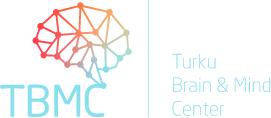Neuronal Signalling Pathways
Group Leader
Michael Courtney, PhD
Turku Bioscience, University of Turku and Åbo Akademi University
Aims
The neuronal signalling lab aims to develop and apply new tools, methods and techniques to acquire novel insight into druggable mechanisms of neurological disease. The group has an extended history of research using optical techniques, including probes and actuators, developing imaging instrumentation and image analysis pipelines. These methods are developed in close collaboration with the Turku Screening Unit, a core facility that aims, in part, to provide researchers with access to lab automation devices as well as services using such devices.
Currently funded projects use both rodent and human neuron systems to investigate the generation, dysfunction and elimination of synapses and the impacts of neuronal connectivity in the context of both common and rare diseases, in particular Alzheimer’s disease and SynGAP syndrome as well as during development. In additional, the lab participates in the EuRas consortium, which seeks new treatments for rare neurodevelopmental RASopathies, by seeking robust disease phenotypes detectable in human neuronal cell models for application of drug repurposing screens. Funding for these projects has been awarded primarily by the Academy of Finland, Horizon Europe and patient group organisations, SynGAP Research Fund US, SynGAP Research Fund EU and Leon and friends e.V., with additional support from foundations, Orion Foundation, Magnus Ehrnrooth Foundation and the Finnish Cultural Foundation.
Location and Equipment
The Neuronal Signalling Lab is located at the Turku Bioscience Centre.
The lab established the Turku Screening Unit (TSU) is a joint activity from several labs providing access to lab automation instrumentation services using these instruments or providing computation approaches to screening. TSU is the Biocity Turku partner of the Drug Discovery and Chemical Biology platform of Bicentre Finland and is a specialized screening site of the EU-Openscreen ERIC, a European infrastructure for supporting the development of molecular tool compounds and early therapeutic candidate molecules. The lab is specifically responsible for the lab automation site of TSU, which is situated at the Turku Bioscience Centre.
The TSU instrumentation available includes i) 3 high-throughput fluorescent microscopes for dynamic imaging perturbation studies of cells, complex cell systems and small animal models, with automated plate loading capacity of 40 and 120 plates from automated incubator and ambient stacks respectively ; ii) a liquid handling platform with nanolitre compound dispensing, assay set-up and possible readout using an integrated plate reader, with a capacity of 10000 samples/run; iii) off-line accessibility to most liquid handling devices within the platform
Resources include compound libraries, total >43000 compounds including a library of ~3700 drugs. In addition lab develops relevant image processing and data analysis pipelines for imaging based studies including phenotypic screens using the high-throughput microscopes.
Group Members
Senior Researchers:
- Lili Li, PhD
Undergraduate Students:
- Barbara Ramos Artigotname
- Aleksandra Nokolaeva
Collaborators & Partners
- Olli Pentikäinen, Institute of Biomedicine, University of Turku, Turku, Finland
- Otto Kauko, Turku Centre for Biotechnology, University of Turku, Turku, Finland
- Francisco Lopez-Picón, Turku PET Centre, University of Turku, Turku, Finland
- Pekka Ruusuvuori, Institute of Biomedicine, University of Turku, Turku, Finland
- Florian Freudenberg, Frankfurt University Hospital, Frankfurt, Germany
- Andrea Hohmann and Yvonne Lai, University of Indiana, Bloomington, USA
- Noboru Komiyama, University of Edinburgh, Edinburgh, Scotland
Main Funding
- Project Grant, Academy of Finland (MJC as PI)
- EUropean network for neurodevelopmental RASopathies (EURAS), EU (MJC as partner)
- Postdoc Fellowship (L-L L as PI)
- Project Grant, SynGAP Research Fund US, SynGAP Research Fund EU and Leon and friends e.V. (MJC and L-L L as co-PIs)
- Magnus Ehrnrooth Foundation (L-L L)
- Finnish Cultural Foundation (L-L L)
Selected Publications
- Candemir E, Fattakhov N, Leary AO, Slattery DA, Courtney MJ, Reif A, Freudenberg F. Disrupting the nNOS/NOS1AP interaction in the medial prefrontal cortex impairs social recognition and spatial working memory in mice. Eur Neuropsychopharmacol. 2022 Dec 10;67:66-79. doi: 10.1016/j.euroneuro.2022.11.006. Epub ahead of print. PMID: 36513018.
- Li LL, Klein FM Li Greci L, Popinigis A, Freudenberg F, Courtney MJ Resonance energy transfer sensitizes and monitors in situ switching of LOV2-based optogenetic actuators. Commun. 2020 Oct 9;11(1):5107. doi: 10.1038/s41467-020-18816-8. PMID: 33037199; PMCID: PMC7547724.
- Robinson S and Courtney MJ (2018) Spatial quantification of the synaptic activity phenotype across large populations of neurons with Markov random fields. Bioinformatics, Sep 15;34(18):3196-3204. doi: 10.1093/bioinformatics/bty322. PMID: 29897415.
- Lee WH, Li LL, Chawla A, Hudmon A, Lai YY, Courtney MJ, Hohmann AG. (2018) Disruption of nNOS-NOS1AP protein-protein interactions suppresses neuropathic pain in mice. Pain. May;159(5):849-863.doi: 10.1097/j.pain.0000000000001152. PMID: 29319606. press release
- Melero-Fernandez de Mera RM*, Li LL*, Popinigis A, Cisek K, Tuittila M, Yadav L, Serva A, Courtney MJ (2017) A simple optogenetic MAPK inhibitor design reveals resonance between transcription-regulating circuitry and temporally-encoded inputs. (*equal contribution) Nat. Commun. 8, 15017. doi: 10.1038/ncomms15017. PMID: 28497795. press release
- Li LL, Melero-Fernandez de Mera RM, Chen J, Ba W, Nadif Kasri N, Zhang M, Courtney MJ (2015) Unexpected Heterodivalent Recruitment of NOS1AP to nNOS Reveals Multiple Sites for Pharmacological Intervention in Neuronal Disease Models. J Neurosci. 35, 7349-7364. doi: 10.1523/JNEUROSCI.0037-15.2015PMID: 25972165 press release
- Li LL, Ginet V, Liu X, Vergun O, Tuittila M, Mathieu M, Bonny C, Puyal J, Truttmann AC, Courtney MJ (2013) The nNOS-p38MAPK pathway is mediated by NOS1AP during neuronal death. J Neurosci. 33, 8185-8201. doi: 10.1523/JNEUROSCI.4578-12.2013 PMID: 23658158 press release
